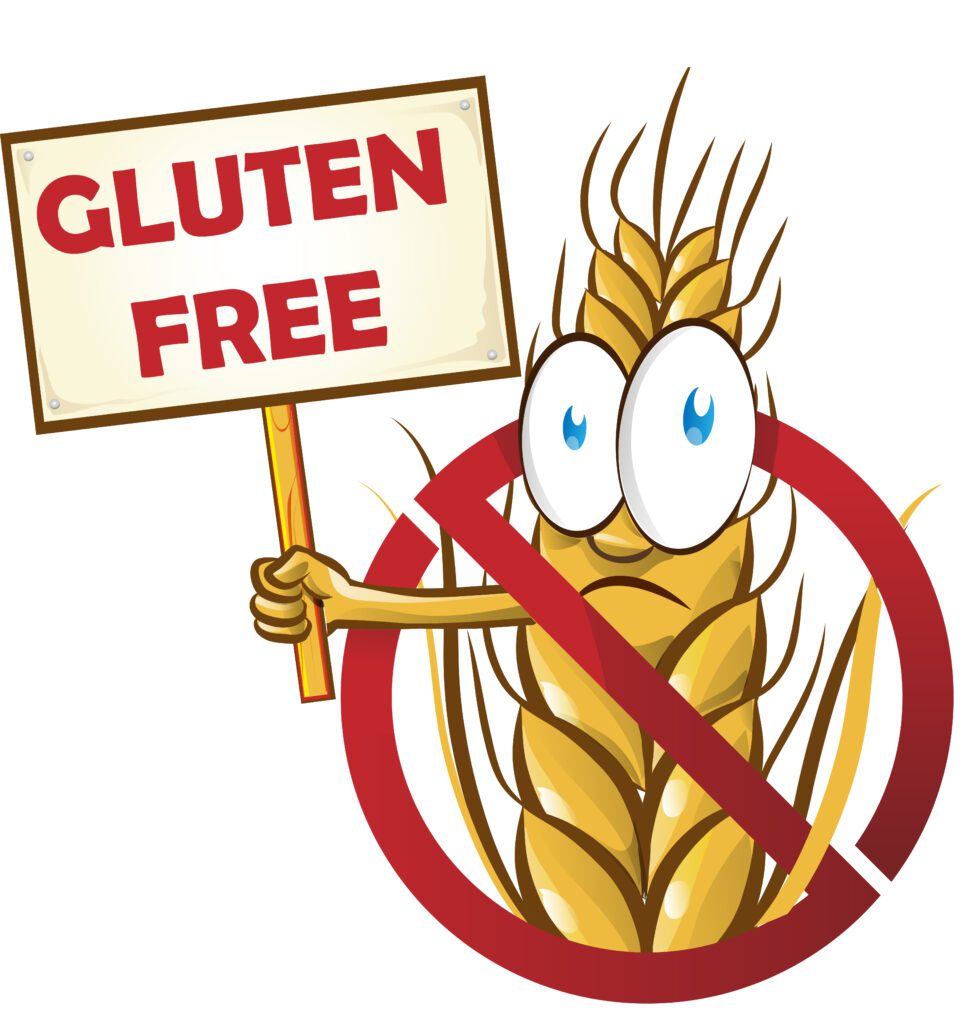
Going gluten-free? Here’s what you should know to maintain a healthy diet
Gluten is a protein found in wheat, rye and barley. It is composed of two proteins, gliadin and glutenin. In recent years gluten-free (GF) diets have become very popular, with many individuals choosing to eliminate gluten from their diets for various reasons. Around 1 in 100 people in the UK are diagnosed with coeliac disease (CD), an autoimmune condition where eating gluten causes damage to the lining of the gut, and for this group of people total avoidance of gluten is essential. Diagnosis of CD can be difficult because antibodies need to be present in the blood or in a biopsy in order to get a positive result. This means you need to be eating gluten regularly in the diet for several weeks before you have the blood test. False negatives are not uncommon.
An increasing number of people experience non-coeliac gluten sensitivity (NCGS). For these people eating gluten doesn’t appeaer to cause damage to the lining of the gut like it does for those with CD, but it can cause unpleasant symtoms such as diarrhoea, wind, constipation, cramping and bloating, creating an inflammatory response in the body. Other people who are at risk for autoimmune conditions avoid gluten due to the links with gluten and autoimmune conditions.
So while there are many healthy reasons for some people to follow a GF diet, following such a diet isn’t automatically a healthy option.
Why is gluten such a problem?
In order for our body to digeset proteins, specific enzymes are released that enable the proteins to be broken down into smaller components (peptides and amino acids) so they can be absorbed into the bloodstream. Our intestines contain a mucous lining which acts as a buffer against toxins and pathogens. A series of tight junctions keep these potentially harmful molecules and large food particles out, allowing nutrients and water to pass through into the bloodstream. When this lining becomes more permeable (known as increased intestinal permeability), unwanted molecules and food particles get through these junctions, triggering an immune response by the body.
For many people, gluten is a difficult protein to digest. Furthermore, gliadin triggers the release of a protein called zonulin, which is thought to increase intestinal permeability in some people. While it is unclear whether increased permeability is a cause or a symptom of disease, it is clear there is an association with health and so should not be overlooked as a key component to optimal health.
Is a gluten-free diet healthy?
It can be, but very often isn’t. GF diets can be high in sugar and low in micronutrients and fibre. In fact the GF isle of the supermarket is a pretty dismal isle, full of poor quality GF versions of products that are in no way healthier just because they are GF. They are often more procsssed and have ingredients added to compensate for the lack of gluten. Grains that contain gluten are rich in essential nutrients such as fibre, B-vitamins, and iron. It’s crucial, therefore, for individuals on a GF diet to find alternative sources of these nutrients to maintain overall health, and that typically doesn’t happen by switching out to a GF version of a product.
To make sure you are following a healthy, balanced GF diet make sure you eat as many different GF whole foods as possible. Try eating different GF grains and vegetables to keep your diet varied and balanced.
Important nutrients to consider when GF
- Fibre (adults need ~30g/day of fibre)
- Include GF whole grains like quinoa, brown rice, and buckwheat to ensure an adequate intake of dietary fibre
- Fruit, vegetables, and legumes are all excellent sources of fibre.
- B-Vitamins
- Consume GF fortified products such as breakfast cereals and nutritional yeast to obtain essential B-vitamins like B12 and folate
- Include lean meats, fish, eggs, and dairy in your diet, as these are good sources of B-vitamins
- Iron
- Iron-rich GF foods include lean meats, fish, poultry, beans, and lentils
- Consume vitamin C-rich foods, such as citrus fruits and berries, alongside iron-containing plant-based foods to enhance iron absorption
- Calcium
- Include dairy or fortified dairy alternatives to meet calcium needs
- Incorporate leafy greens, almonds, and sesame seeds for additional sources of calcium.
- Healthy Fats
- GF sources of healthy fats include avocados, nuts, seeds, and olive oil.
If you would like help following a healthy GF diet then please do get in touch.
For a full list of food that contain gluten, visit www.coeliac.org.uk.
